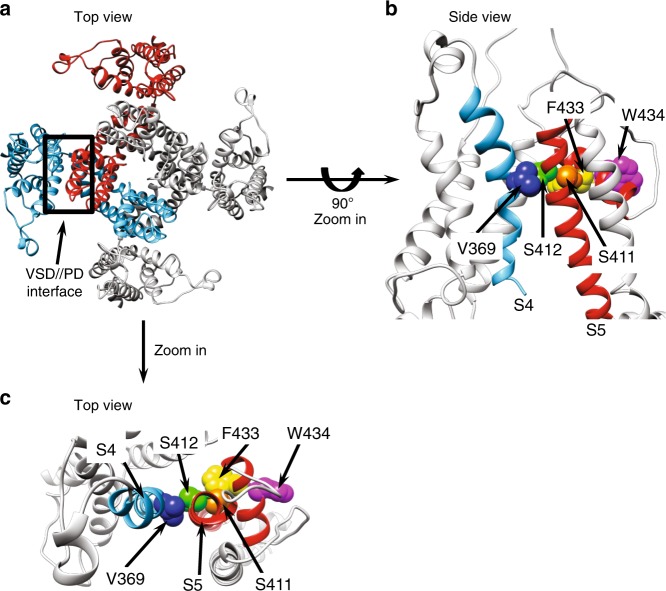Fig. 7.
Structural models of a Shaker-like channel (KV1.2, PDB:3LUT), showing the suggested VSD//PD interface. a Top view of the tetrameric channel, with two subunits in blue and red colors and the other two, for clarity, in light gray. Notice that the black square region indicates the VSD//PD interface between the VSD from different blue and red neighboring subunits. b Black square region from a zoomed in and turned by 90°. The cartoon shows with ribbons the S4 segment from one subunit in blue and the S5 segment from the neighbor subunit in red. Colored spheres are the van der Waals volumes of the atoms from the residues indicated (V369 in blue, S412 in green, S411 in orange, F433 in yellow, and finally W434 in magenta (residues numbering as in Shaker)). These residues are proposed to be the physical connection of the noncanonical coupling pathway between VSD and PD. c Top view of the zoomed black square region shown in a. Color code and labels correspond to a. Note that in a and in b the van der Waals surfaces are in contact, giving support to the hypothesis of the VSD//PD interface

